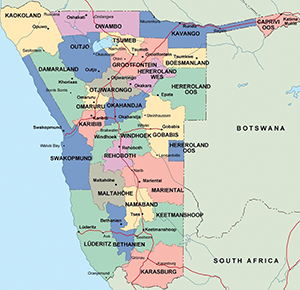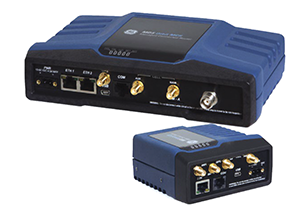
Namibia Water deploys Interlynx Maestro telemetry solutions for efficient monitoring and management of its scarce water resources.
Namibia Water challenges
Namibia is one of the driest countries in sub-Saharan Africa, with average annual rainfall below 250 mm in many regions. The deserts dominate its landscape, and high evaporation rates mean much of the rainfall is lost before it can be used. With climate change, population growth and urbanisation, the water challenges are further demanding serious action from the Namibian government.
Namibia Water Corporation (Nam Water)
The Namibia Water Corporation (Nam Water) is responsible for supplying water in bulk to all corners of Namibia. Because of the serious nature of the water scarcity, Nam Water uses its advanced, effective and progressive nature of planning, management and infrastructure roll-out projects to aggressively address the challenges.

Utilisation of advanced technology
Nam Water utilises advanced technology to ensure its operational and water management are tailored to ensure its scarce resources are optimised. Nam Water relies fully on an advanced telemetry solution as a major enabler for managing its scarce water resource most efficiently.
Telemetry, the enabler
The old saying, “you can only manage what you measure”, was taken seriously by Nam Water in their professional approach to effective water management on deployed water infrastructure.
Over more than 15 years, Nam Water deployed one of southern Africa’s most powerful and well-proven telemetry solutions designed and manufactured by SSE/Interlynx-SA. The complete telemetry solution consists of the Interlynx Maestro RTUs, the GE-MDS data radios, and the Citect scada system. These telemetry stations are deployed all over the vast Namibian territory.
Nam Water telemetry deployment
The Nam Water has already deployed over 500 of the proven Interlynx Maestro RTU Telemetry stations. With many major projects in the pipeline, Nam Water must embark on a major expansion of its telemetry system. The robust GE-MDS data radios have mainly been used as a communication medium over extremely long distances.
The Maestro telemetry stations are installed in various districts, where each district has the user-friendly Interlynx OPC server as well as Citect scada. Currently, a total of 15 Citect scada with OPC servers are deployed throughout the country. The 15 scada systems report to the Main Citect scada located at the Nam Water head office in Windhoek.
Interlynx Maestro RTU
Nam Water evaluated several telemetry solutions and decided on the SSE/Interlynx Maestro telemetry equipment. With the proven record of over 20 000 Interlynx Maestro RTUs deployed in southern Africa, as well as its unique features was found to be aligned to the challenging requirements of Namibia. The Maestro RTUs have been deployed over a vast area in all corners of the country. The following unique Maestro features have been utilised by Nam Water:
• Store-and-forward capabilities, where any three functional Maestro telemetry stations can be utilised as repeaters between the source and the destination station.
• The advanced data logging feature of the Maestro RTU.
• The Maestro can easily implement other unique communication methodologies that Nam Water requires.
• The ability of the Maestro RTU to extract data from any IED device onsite, which the RTU can log and/or forward to any remote station in the communication network.
• The robust nature of the Maestro RTU, as it is developed in Africa for Africa.
The Nam Water telemetry utilises the older, as well as the newer versions of the Maestro RTU equipment. The fact that all newly launched Maestro telemetry RTUs are designed to be fully backwards compatible enabled Nam Water to seamlessly integrate newer Maestro RTUs into an older existing Maestro telemetry network.
Maestro RTU further enhancements
To ensure the longevity and future expanded requirements in the telemetry industry in general, Interlynx has also implemented the international DNP-3 data exchange protocol. The Interlynx SDLP protocol can be utilised simultaneously with the DNP-3 protocol on the same RTU.
Over the last 30+ years, the Mastro RTU grew from the RTU-1 to RTU-2 to RTU10, to RTU11 to RTU12 to Maestro 2 000 and now the RTU 2 500. Interlynx has already started with the development of the Maestro 3 000. The Maestro 3 000 will have all the current advanced functionalities of the Maestro 2500, but the Maestro 3 000 will support a variety of International Protocols, feature several Ethernet ports and incorporate the FULL IEC 61131 PLC functionality in all aspects.
GE-MDS radio communication network
The spread-out installation of the Telemetry monitoring brought its challenges. Nam Water mainly makes use of a comprehensive Radio Data Communication solution with some GSM-4G communications.
The data radio communication network makes exclusive use of the well-proven GE-MDS data radios of which Interlynx is the sole distributor with the necessary engineering support in all southern African countries.
Combination of GSM-4G and data radios
In several locations, radio communication between scada and a cluster of remote telemetry stations is not possible. The Maestro RTU then enable the use of GSM-4G between the scada and one remote Maestro telemetry station. This one Telemetry station has both a GSM-4G modem as well as a GE-MDS data radio connected to it. All other Telemetry station in the cluster of stations is then equipped with data radios.

The Maestro RTU seamlessly handle the GSM communication from scada to the first GSM and data radio station to ensure all GSM data is routed to the data radio network, and vice versa.
Interlynx-SA
Interlynx were established after the unbundling of SSE. Based on over 32 years of experience, Interlynx is aggressively advancing and keeps on expanding its product offerings and quality of service, not only in South Africa and southern Africa, but also to other countries worldwide.
For more information contact Gert Bezuidenhout, Interlynx-SA,
| Tel: | +27 12 663 4331 |
| Fax: | +27 12 663 4335 |
| Email: | [email protected] |
| www: | www.interlynx.co.za |
| Articles: | More information and articles about Interlynx-SA |

© Technews Publishing (Pty) Ltd | All Rights Reserved